Here’s Why a Visit to Mostar Comes Highly Recommended
It’s time to explore the Balkans, guys… Read on to find out why travel to Mostar comes highly recommended, Mostar Bridge: the city’s star attraction, the war in this region, its rebirth, how to plan a Dubrovnik to Mostar day trip, and the best things to do in Mostar.
You will also find out why this city is often said to be the jewel of Bosnia and Herzegovina.
Reading time: 6 minutes
A Visit to Mostar
You didn’t know Bosnia and Herzegovina was this beautiful?
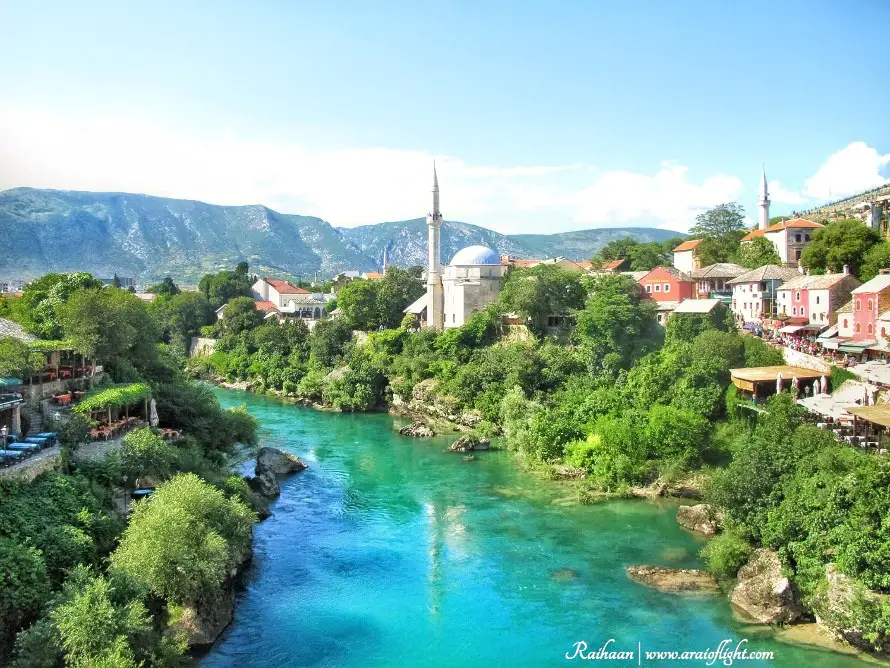
When you spend a night in Mostar, it is not the sound that wakes you up in the morning, but- the light. I know this from my own experience. It was the light that welcomed me when I arrived, it followed me from the morning to the evening, and when I left, that light forever stayed in me as the main characteristic of my memories of Mostar…
Cradled in a valley between the Velez and Hum Hill mountain ranges, Mostar is split by the rushing water of the Neretva River.
The clear, green waters of this waterway run through the fifth-largest city in the country and the most important in the region. The city of Mostar is seen as the economic and cultural centre of Herzegovina, since its peak development in the 16th century.
Renowned for its ancient traditions, long history, and unique mix of European and Ottoman influence, Mostar is certainly worth a visit, on a day trip from Dubrovnik at the least or longer if time allows. Stay longer and you get to thoroughly enjoy the charms of the surrounding region.
>> Read next:
Why + how to visit Blagaj Buna in Bosnia from Mostar
Getting to Mostar
The bus from Dubrovnik to Mostar lasts hours, but the time coasts by as a result of an acquaintance with a young man named Stribor, a local who has been looking for work in Croatia and is on his way back home.
He helps with the translation between the driver and myself and also at the stressful moments at passport control. This leads us to chatting most of the way, as he shares his lunch with me.
It is here, even before entering the country that I am introduced to the generosity of the Bosnian people.
On arrival at the bus station, I bid farewell and make a slow descent into the Old Town.
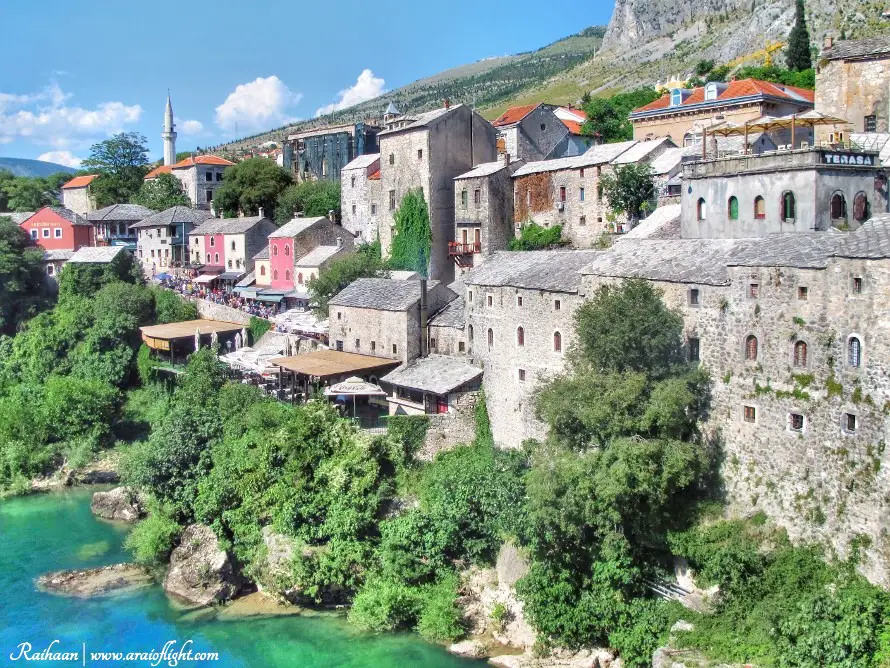
I can’t explain, but there’s something in the air. It’s as if the entire city is wrapped in a green blanket.
Far beyond the herb garden a melodious sound is heard in the distance, the call to prayer from the Karadjoz-beg mosque.
Wandering aimlessly around the village town, I notice the influence of the Ottoman Empire all over. This city could fall into place anywhere in Turkey without hesitation.
As sunset washes the city in golden light, I walk around wanting to see more, further into the main part of town. Church bells are heard in the distance next to the gushing of the nearby river streams and the calls of a salesman.
It’s quiet all around save for one or two tourists and old men sitting on the porch watching time go by.
Mostar Bridge: The symbol of the city’s spirit
Passing through the old city, I come across the highlight and the most prominent feature of Mostar.
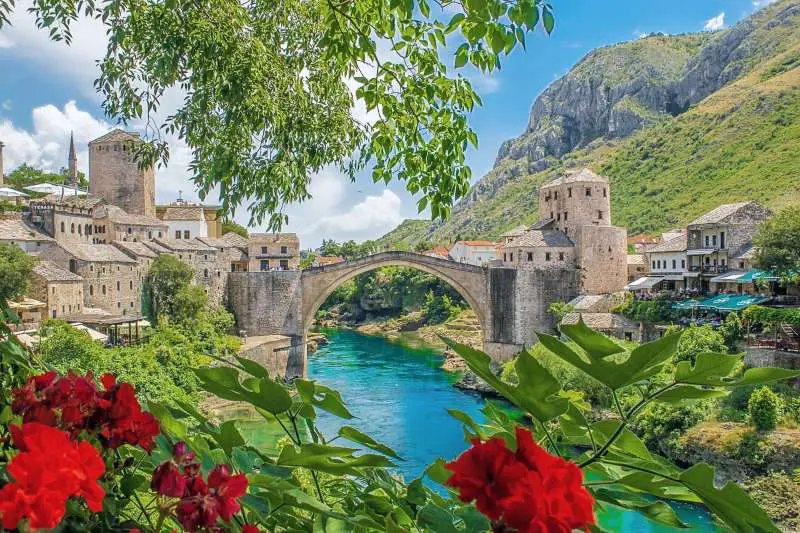
The star attraction, standing proudly overlooking the historic center of the city is:
Stari Most meaning The Old Bridge.
It is one of the most important and recognizable landmarks in Mostar, but also the entire country of Bosnia and Herzegovina.
Mostar’s history is irrevocably entwined with that of its bridge.
A UNESCO World Heritage Site, this beautiful monument was originally built by the Ottomans in 1566.
It was deliberately shelled because of its cultural significance and destroyed in 1993 during the Bosnian war.
After the war, it was rebuilt in 2004, using some of its original pieces recovered from the Neretva River.
In 2005 the bridge and the surrounding old town was enlisted on the UNESCO World heritage site list for its post-medieval European landscape, that signifies the cultural heritage of the region.
Today, it is one of Bosnia and Herzegovina’s most recognizable landmarks, spanning the length of the river, 4 metres wide, 28 metres long and standing at a height of 42 metres.
Mostar Bridge is considered one of the most exemplary pieces of Ottoman-Islamic architecture in the Balkans and is named as the one of the 20th most beautiful bridges all over the world.
The bridge comprises one stone arch stretching across the river. At the time of construction, it was the largest man-made single arch bridge in the world.
Surrounding Stari Most you will find alleys that are full of shops, market stalls, and the Old Bridge Museum that showcases the long history of this old bridge.
Don’t miss a walk up to the Koski Mehmed-Pasha Mosque’s minaret. From this vantage point you will be provided with panoramic views of the bridge and the surrounding city.
The adjacent Halejiba Tower and Tara Tower are seen as the “the bridge keepers,” protecting the Old Bridge of Mostar.
This bridge is also renowned for a daring tradition of young men jumping off of the bridges’ highest point. This, as they prove their manhood by diving into the cold water of the flowing river below. Spend a few minutes on the bridge and you’re bound to witness such a sight.
The charm of this city lures day- and cruise-shippers from as far away as Split and Dubrovnik in Croatia looking to explore much of Mostar on a day trip, but once the sun has gone down, the city empties. At night, the bridge is often vacant.
This is great news for anyone staying over, like myself, and I love that I got the bridge all to myself.
Standing here alone with time to reflect, it’s hard to imagine that this city was completely destroyed during the war in the early nineties.
War never makes sense
The city was the most heavily bombed of any city during the war in Bosnia and Herzegovina following the breakup of Yugoslavia. The city and its residents were under siege during most of 1993 and air strikes destroyed many important parts of the city.
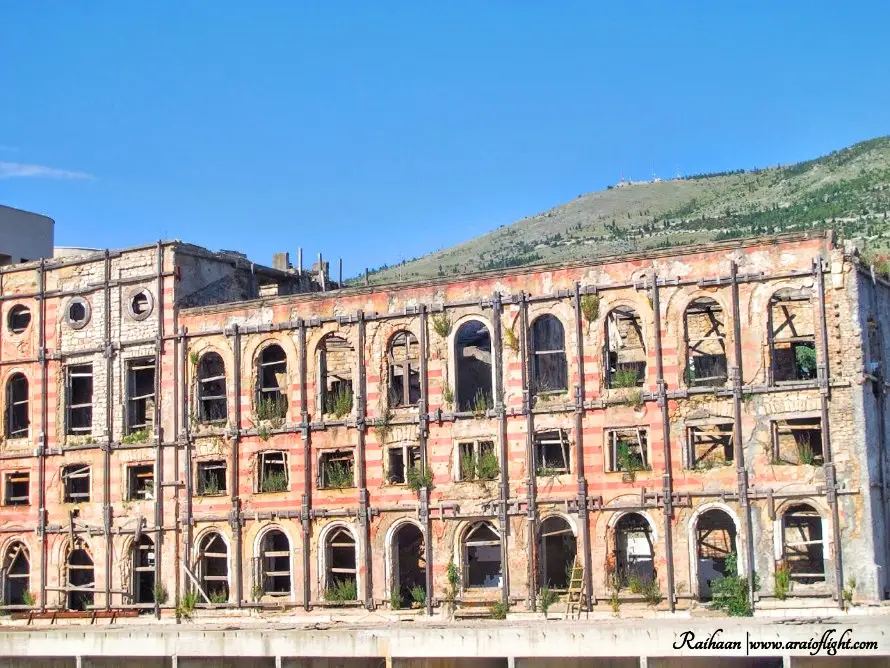
I never really understood the war. Of course, war never makes sense, but in this particular case, I couldn’t understand the dynamics and who was fighting whom.
In March 1992, the Bosnian government held a referendum for independence. The Bosnian Croats and Muslims voted in favour while the Bosnian Serbs were largely against independence.
This led to an aggression by neighboring countries, in particular Serbia, to “ethnically cleanse” Bosnian territory by methodically removing all Bosnian Muslims, known as Bosniaks using former Yugoslavian military equipment.
This continued until international intervention finally arrived in 1995.
I rush back to see the Spanish square and the buildings destroyed during the war, which officially ended over 20 years ago. However, remnants of the Bosnian war still remain and many visible signs of Mostar’s troubled recent history can be seen throughout the city.
Bullet holes, abandoned buildings and cemeteries — I notice this all around.
Rebirth of Mostar
Simultaneously, those fragments of war are mixed with moments of generosity, hope, impeccable beauty, delightful villages and multinational architecture all intertwined with stories of its people.
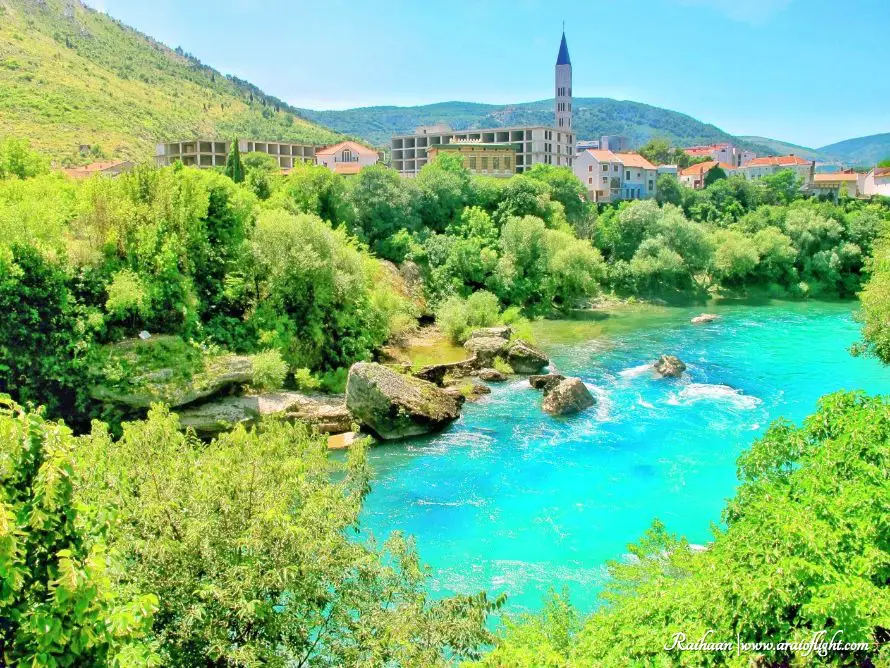
Stories of struggle.
Stories of triumph.
A significant portion of the city has been rebuilt.
Stari Most, Old Bridge, was rebuilt using local materials and traditional construction methods, and reopened in 2004.
Travellers might be surprised to see that this formerly war-torn city is a lively and beautiful destination once again, particularly the area within and around the old town. The alleys are filled with stalls and local shops, allowing you to appreciate the city’s noteworthy comeback and the loveliness that much more.
It’s not often that Bosnia and Herzegovina makes the most beautiful countries list in travel magazines and online publications alongside the likes of Malta, Spain, and South Africa.
But…
I’m really glad to see that this once slumber country is slowly making its way onto the radar of travellers the world over.
My recommendation #1: Wander over to explore the splendour of Mostar and be charmed by all that it has got to offer. Balkans road trip, anyone?
–> Before the majority of tourists and accompanying selfie sticks discover this gem too.
My recommendation #2: “Bridge on the Drina” by Ivo Andric’s is a great travel read for background and context into this area like no other. If you have room, take the whole “Bosnian trilogy.”
For a more thorough guide into the country, check out the Brandt Guide to Bosnia and Herzegovina — the best guide to the country.
Let’s take a look at the…
10 Best Things To Do in Mostar
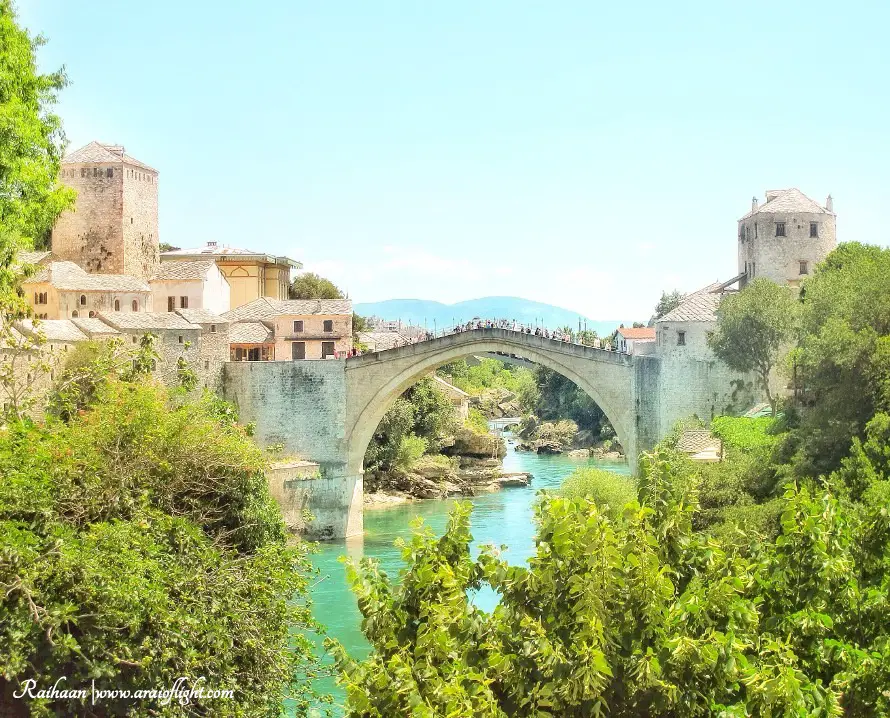
1. Marvel at Stari Most Old Bridge
2. Walk along or get into some adventure on the Neretva River
3. Take time to inspect the Muslibegović House
4. Pick up some local treats and souvenirs at Mostar Old Bazaar (Bazar Kujundžiluk)
5. Check out the view from the Koski Mehmed Paša Mosque
6. Take time to reflect at the War Photo Exhibition and War Museum
7. And at the “Don’t Forget” stone
8. Old Bridge Museum (Muzej Stari Most)
9. A trip to the Blagaj Buna Monsatery. Full details here
10. A visit to Kravice Falls
How to get to Mostar Old Town: Tour
I would recommend spending at least one night in Mostar. In this way you get to experience the authenticity of the place without having to deal with the large number of tourists that visit on a day trip.
Should you be on limited time, Mostar can also be visited as a day trip from Dubrovnik.
This is fairly simple as there are tours that leave Dubrovnik to Mostar daily.
>> From Dubrovnik: I highly recommend this Mostar Full-day Trip from Dubrovnik.
During this 12-hour trip you get to visit the picturesque and charming towns outside of of Dubrovnik on this trip to Pocitelj, Medjugorje, and Mostar, experiencing a variety of cultural, historic, and religious sites. Transport to and from Dubrovnik is included as well as a local guide.
If you wish to include a stop at Kravice waterfalls, then this Mostar and Kravice Waterfalls: Day Trip from Dubrovnik is the one for you.
During this 12-hour day trip, you get to travel back in time to discover a city steeped in history on a guided tour of Mostar, get the chance to swim under the Kravice waterfalls, and experience the different religions and cultures of Bosnia and Herzegovina.
>> From Sarajevo: It is just as easy to visit Mostar from Sarajevo by bus, train, or even a car if you’re doing a Balkans road trip.
This Mostar and Cities of Herzegovina Day Tour from Sarajevo tour is 9-hours and includes a stop in Konjic, famous for its 17th century Old Bridge, mysterious Yugoslavian atomic shelter and amazing wood craftsmanship followed by a visit to Mostar.
>> From Split: Don’t think you get to miss out on a visit to Mostar just because you are as far away as Split because a day trip to Mostar from Split is very possible.
My recommendation is this Mostar from Split or Trogir Tour.
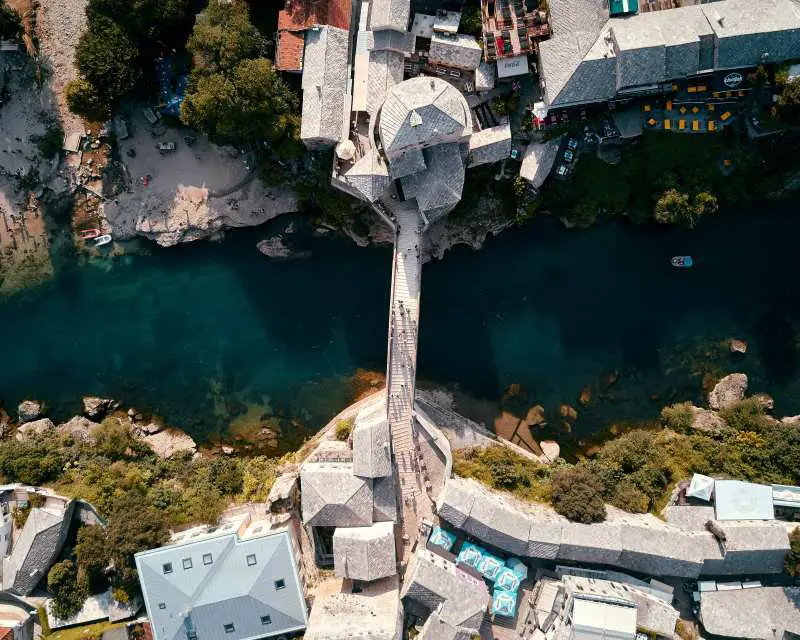
And that’s about it for all things Mostar, for now guys.
Did you not know how beautiful this country is?
Well, now you know 😉
And don’t get me started on the train journey from Mostar to Sarajevo.
The journey is incredibly breathtaking, with views that are out of this world. Mountains that seem to stretch forever, both latitudinally and longitudinally. Covered entirely with trees, green and gold, the peaks extending into the sky.
Only my second favourite train journey… ever
But that’s a story for a future (upcoming) post.
Before you go, do check out this Schengen countries list 2023 guide to help you plan your travels in the region.
Uživaj u životu,
Rai @araioflight

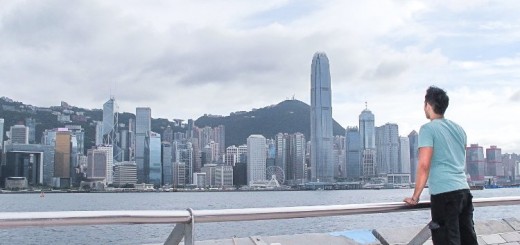


 New Here?
New Here? 









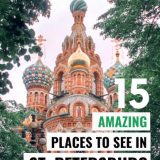


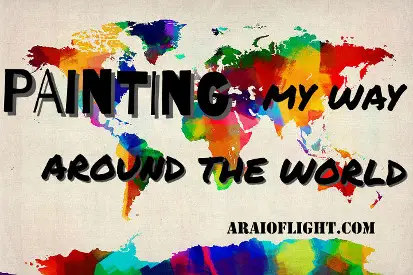
You’re so cool! I don’t suppose I’ve read anything like this before. So nice to search out someone with some unique ideas on this subject of life in Mostar. really thank you for starting this up. this web site is one thing that is wanted on the internet, someone with slightly originality. helpful job for bringing one thing new to the internet!
Not as cool as you! Thanks a lot